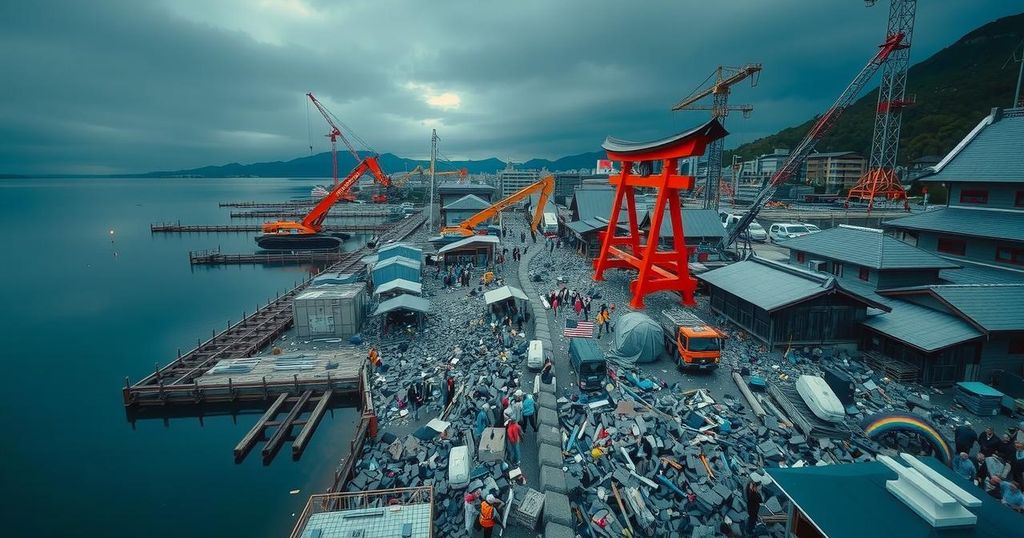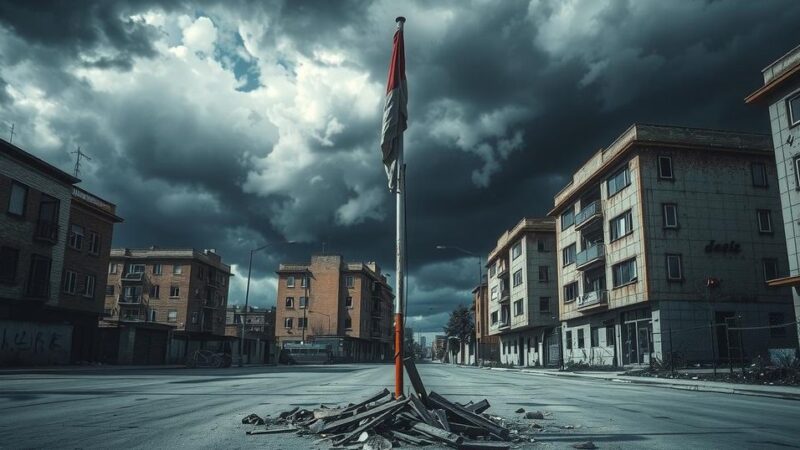The 2011 Tohoku earthquake and tsunami caused extensive destruction in Japan, resulting in a death toll close to 20,000, with significant impacts on coastal towns and nuclear facilities. The disaster prompted a critical reassessment of disaster preparedness and safety protocols, particularly concerning nuclear energy in the region.
The 2011 Tohoku earthquake and tsunami represented one of the most catastrophic natural disasters in Japanese history, significantly affecting millions of lives and the infrastructure of the affected regions. In the immediate aftermath of the tsunami, the initial estimates indicated a death toll in the hundreds; however, as rescue operations progressed, it became alarming that within a fortnight, the confirmed number of deaths surpassed 10,000, with more than 15,000 individuals reported missing. As the situation unfolded, approximately 28,500 people were considered either dead or missing. By the end of 2011, this total had been adjusted to 19,300 as additional information regarding missing persons emerged. The tsunami wreaked havoc on coastal towns, sweeping away entire communities along with boats, vehicles, and debris. Devastation was especially pronounced in Miyagi Prefecture, which experienced the most fatalities, with around 10,800 individuals reported dead or missing. Tragically, the majority of casualties were drowning victims, with a significant proportion being elderly individuals aged 65 or older. The earthquake itself caused extensive damage beyond the tsunami’s immediate destruction, including significant fires across cities and the destruction of thousands of homes in areas such as Fukushima, Ibaraki, and Chiba prefectures. Consequently, critical infrastructure was severely impacted, too, with roads, railways, and essential utilities disrupted. Another critical concern arose from the nuclear facilities in the Tōhoku region, particularly at Fukushima Daiichi. Although reactors were initially secured following the earthquake, subsequent flooding from tsunami waves compromised cooling systems, leading to partial meltdowns in three reactors. This resulted in hydrogen explosions and significant radiation release. An evacuation zone was established, and governmental authorities declared a nuclear emergency, eventually classifying it at the highest severity level on the International Atomic Energy Agency scale, placing the accident in the same category as Chernobyl. While efforts were made to stabilize the reactors and remove contaminated soil from affected areas, radiation levels initially remained high, making certain regions potentially uninhabitable for decades. Over time, the situation improved to some extent, allowing some displaced residents to return home, albeit amid concerns over lingering radiation. The disaster solidified Japan’s need for improved disaster preparedness and response protocols, ensuring that such tragedies would catalyze future disaster mitigation strategies and international cooperation in times of similar crises.
The 2011 Tohoku earthquake and tsunami were triggered by a powerful undersea megathrust earthquake, registering a magnitude of 9.0 on the Richter scale. This seismic event caused widespread devastation along the northeastern coast of Japan, inundating numerous cities and towns, and leading to catastrophic loss of life, particularly through drowning. The resulting tsunami also severely impacted nuclear power plants, leading to one of the most significant nuclear accidents in history. This disaster highlighted the vulnerabilities of coastal infrastructures and the urgent need for preparedness in disaster-prone regions.
The 2011 Tohoku earthquake and tsunami underscored the profound vulnerabilities of Japan to geological disasters, revealing the critical necessity for improved infrastructure, emergency preparedness, and effective disaster response protocols. The death toll approached 20,000, predominantly due to drowning, and the disaster’s repercussions continue to be felt, particularly in the context of ongoing nuclear safety and environmental concerns. As such, this event serves as a somber reminder of the importance of vigilance in the face of natural calamities and the persistent efforts required for rebuilding and recovery in affected areas.
Original Source: www.britannica.com






